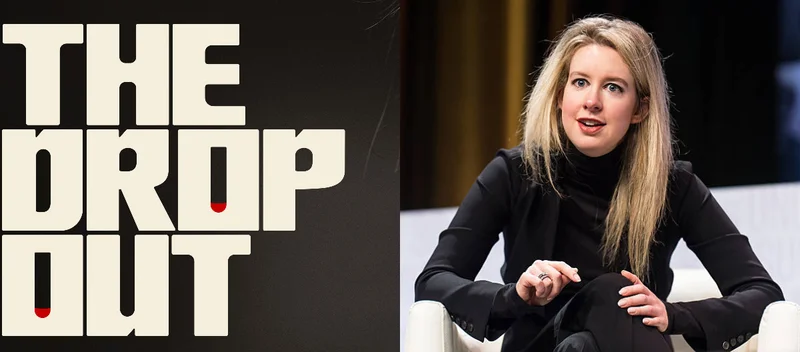The mythology surrounding the founder-as-dropout is a cornerstone of Silicon Valley lore. It’s a narrative built on outliers: Gates, Zuckerberg, Jobs. The story is clean, compelling, and implies a specific kind of genius—one so potent that formal education becomes a practical impediment. We’re meant to believe that dropping out is a signal of extreme talent, a rational economic decision made by those operating on a different intellectual plane.
Recently, two data points emerged that complicate this simple narrative. The first is Arlan Rakhmetzhanov, an 18-year-old from Kazakhstan. He fits the classic mold almost perfectly. A self-taught coder, he left his American high school after taking an investor call for his AI startup, Nozomio, in the principal’s office. He then went through Y Combinator and raised a significant seed round of $6.2 million from a roster of top-tier VCs (including CRV, BoxGroup, and Y Combinator itself). His story is a direct descendant of the original mythos, validated by the ecosystem’s most powerful gatekeepers.
The second data point is Evan Stanfield, a 19-year-old who left the University of Kansas not with a revolutionary piece of code, but with a service-based business model and $20 to his name. His company, Clipping Culture, doesn’t build AI agents; it mobilizes a network of over 12,000 young creators to generate viral short-form content for brands. Stanfield is a college dropout, but his path represents a fundamentally different economic equation.
Examining these two cases side-by-side reveals that the single, monolithic "dropout" narrative has fractured. We are no longer observing one phenomenon, but at least two distinct, divergent strategies for exiting the traditional path, each with its own risk profile, capital requirements, and definition of success.
Rakhmetzhanov’s trajectory is one of high-capital, high-prestige venture pursuit. His success is measured in fundraising milestones and the pedigree of his backers, which includes YC patriarch Paul Graham. The $6.2 million figure isn't just operating capital; it’s a powerful signal of market validation from a very small, very influential group of people. He is playing the long-established game, just at an accelerated pace. His stated advantage is that youth allows for failure—a core tenet of venture capital, where investors expect most portfolio companies to fail in pursuit of the one that returns the fund. He is aiming to become, in his words, "the leanest AI startup in terms of talent density," a goal that aligns perfectly with the VC mandate for capital-efficient, high-growth outliers.
Stanfield, by contrast, operates in a different universe of capital and risk. His business, Clipping Culture, is built on arbitrage. He identified an inefficiency in the creator economy: brands pay high CPMs (cost per thousand views) for traditional ads, while a distributed network of creators will produce organic-style content for far less. The numbers are striking. Stanfield notes that Meta or Google ads can run from $10 to $25 CPM. His model can be as low as 10 cents. One campaign for the artist bbno$ generated 190 million views on a $9,000 budget. That’s a CPM of about five cents—to be more exact, a CPM of $0.047. This is not a technological breakthrough; it is a brilliant exploitation of a market pricing discrepancy.
Unlike Rakhmetzhanov, Stanfield’s barrier to entry wasn't technical skill, but hustle. He didn't need a minimum viable product; he needed a client. His first campaign, secured with outreach and a $2,000 budget, was his proof of concept. "Drop shipping is hard. You need capital," he states. "With this, you don’t." This is the critical distinction. His model required almost zero startup capital, removing the need for permission from the venture ecosystem that validated Rakhmetzhanov.

Founder, Arbitrageur, or Brand?
A Divergence in Risk and Scalability
This brings us to the core of the divergence. The high school dropout building a deep-tech AI company is engaged in a high-stakes bet on technological differentiation. The risk is binary: either the product finds a massive market and creates a category, or it goes to zero. The college dropout building a clipping agency is engaged in a bet on network effects and operational excellence. The risk is not binary; it's operational. Can he manage a network of 12,000 creators? Can he maintain quality control? Can he keep client acquisition costs low?
I've looked at hundreds of pitch decks for both product and service-based businesses, and the low initial capital requirement for Stanfield's model is the key differentiator. It removes the VC gatekeeper, which fundamentally changes the risk profile of the entire enterprise. His company scales not by perfecting a piece of code, but by expanding its network of creators and clients. It’s a business of logistics and relationships, not R&D.
While these two models evolve, the "dropout" concept itself is being leveraged in a third, entirely different context: as a mature brand identity. Consider the streaming service Dropout, run by CEO Sam Reich. The company name evokes the same anti-establishment ethos, but its operations are far from a bootstrapped startup. A recent stunt involved tricking Reich into starring in his own surprise episode of Game Changer, a production that involved a castle, a complex live-action roleplaying game, and an alternate reality game for fans. The estimated cost of this single episode? Between $100,000 and $200,000.
This is not the action of a scrappy upstart. This is a calculated, high-budget content marketing play by an established media company to deepen its relationship with a loyal audience. The "dropout" here is not a person leaving an institution; it's a brand aesthetic. The company is spending significant capital to perform the idea of being a renegade, reinforcing the very identity that attracts its subscriber base. The name is a signifier of a creative philosophy, but the balance sheet is that of a stable, capitalized media entity.
The word "dropout" has become a dangerously overloaded term. It can describe a venture-backed prodigy like Rakhmetzhanov, a bootstrapped network arbitrageur like Stanfield, or a corporate brand identity like Reich's media company. The romantic narrative of the lone genius leaving school to change the world still exists, but it is now just one lane on a much wider highway. The more scalable, accessible path may not be the one that ends with a YC Demo Day, but the one that starts with a $20 bank account and a deep understanding of a fractured, inefficient market. The signal has become the noise.
Revising the Founder Formula
The data suggests the archetypal dropout founder is becoming a statistical anomaly, a romanticized outlier. The more potent, replicable model isn't the one chasing venture capital for a moonshot, but the one arbitraging systemic inefficiencies with minimal upfront capital. One path creates a myth. The other creates a business.
Reference article source:
- I'm a high school dropout who raised $6 million out of Y Combinator. Being a teen founder means you can take more risks.
- College Dropout Builds Clipping Agency Driving Billions Of Views For Brands, Musicians
- Inside Dropout’s Surprise ‘Game Changer’ Finale: How Sam Reich Was Tricked, Attempted to Hide ‘Samalamadingdong’ Episode (EXCLUSIVE)










